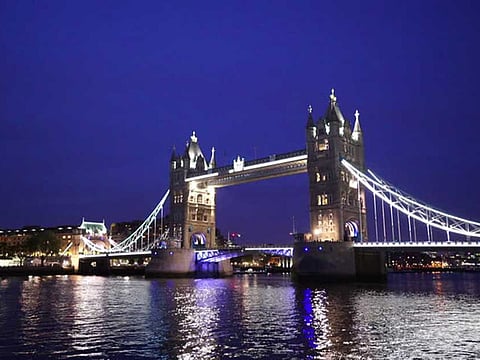An unabridged fetish for bridges
Today, I walk down the Dubai Water Canal, and approach the latest love of my life

Anna fumbled with her blocks as I watched this four-year-old building something with her pudgy, little fingers. And when she was done, she told me with a flourish, an effulgent glow of pride emanating from her face: “I have just built a bridge, Miss. With this I can reach my baby cousin across so much water, in India!” I was a lover of bridges too, like little Anna. I had a similar penchant for bridges since childhood! A fetish that troubled some; allured some and left some bewildered!
As a first-grader, I would get engrossed in the act of constructing a bridge with a ruler and two erasers and imagine that people would walk on this bridge and avoid falling into an illusionary, angry water body down under. This reverie would be broken by a rude nudge from my teacher. The first bridge that I came to be acquainted with was the London Bridge, in a traditional English nursery rhyme and singing game. The rhyme would go thus, ‘London Bridge is falling down ... my fair lady’. I would imagine a beautiful bridge breaking apart and then being rebuilt with iron bars. Then my mother would show me pictures of River Thames and the bridge over the river. It adorned my baby-mind with a beautiful fairy over-seeing the task of building a bridge.
A symbol of ‘connecting’, ‘bonding’ and linking together — the bridge over a little brook in Assam, was what I remember — visiting that place every Sunday. This bridge ensconced in memory now, would see me standing on it with my brother in tow, as an eight year old, we would throw pebbles into the brook as the water frothed and gurgled happily, as if participating in our mindless game, wholeheartedly. Time would stand still as some two wheelers and cowherds passed by. It connected two villages.
As I grew up and was sent to boarding school in Calcutta (now Kolkata), there was a new entrant in my world of bridges — the iconic Howrah Bridge stole my heart as it welcomed me in all its splendour. The 26,500-tonne structure reflects the pulsating camaraderie that exists amongst its citizens. It was unceremoniously inaugurated 75 years back when a tram car rolled across. The gigantic bridge thus hangs over River Hooghly and till date it leaves me spellbound whenever I ply across!
I entered my teens and was utterly mesmerised by The Bridge of Sighs also known as Ponte dei Sospiri by Venetians. According to folklore, when prisoners crossed the canal on the bridge, they sighed in despair as they approached their end of freedom and thus the bridge acquired its name. It reeked of a romantic poignancy and as I read Byron’s lines, ‘Stood in Venice, on the Bridge of Sighs, A palace and a prison in each hand’, I could almost feel the sense of desolation of the prisoners as they crossed over to the prison. Thus sometimes bridges added a dual flavour to their task of “bonding”, as a remedial path. A path that led from actions to finally their consequences!
Naturally the word “bridge” and its symbols figured in our literature and music classes too. Mr Mathews, our music teacher, decided upon the song ‘Like a bridge over troubled water’ by Simon and Garfunkel as the song the school choir would sing for a fest competition. The song plays in my mind and I try to be that “bridge” and “ease” people around when they are down and out!
One of my favourite poems is The Bridge Builder. An old man crosses over a deep canyon with water running through it. He crosses the ravine himself and once he reaches the other side he stops to build a bridge. A person observes his act and questions why should he stop to build a bridge when he has already gone through the hardship of crossing the waters himself? So often in life we hurry on, focused only on getting our own things done and we forget that once we have arrived at solutions to the rigmaroles of life, the greatest gift we could give to others is to take the time to stop and build a bridge for them that could help them pass the same way we have, without having to go through too many hassles.
Today, I walk down the Dubai Water Canal, and approach the latest love of my life. I stand on a bridge, as I look down at the still water; I see a dhow plying happy faces of myriad races. Reflecting values that this country adopts, based on coexistence, brotherhood and human tolerance. Sometimes we overlook the beauty of stillness as we get lost in the scurrying pace of everydayness. This is where I come on weekends, here I mull over the hatred that’s spewing all around the world. Ironically, my new love is called the Tolerance Bridge. Here I gather strength to build more bridges and break down fences and walls!
As the years passed by they walked into my life, one by one, like enticing lovers; wise teachers; they have merged in me — these bridges — and they will forever continue to unite, integrate and enamour!
Navanita Varadpande is a writer based in Dubai.
Sign up for the Daily Briefing
Get the latest news and updates straight to your inbox



